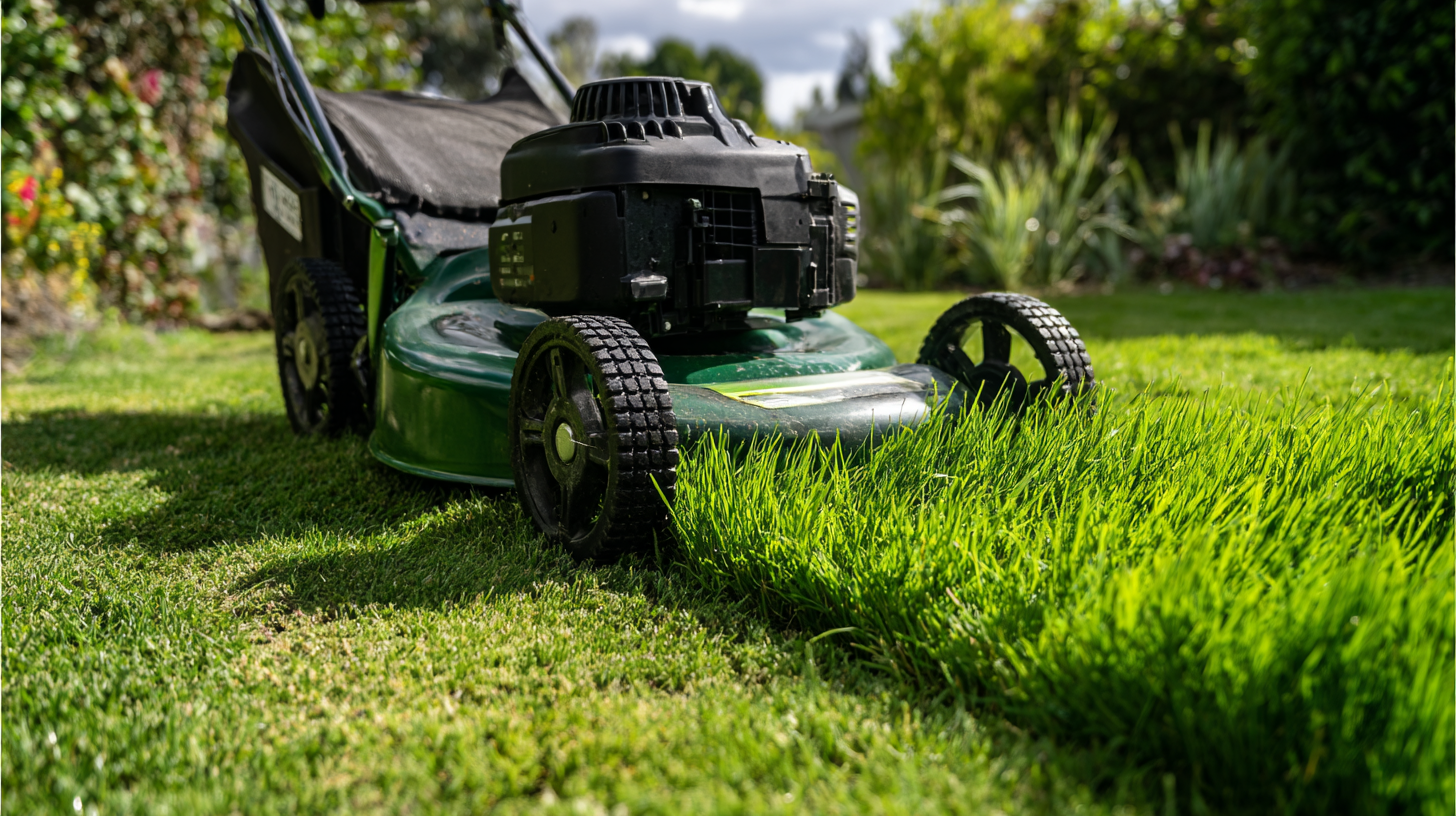Blog
Signature Lawn and Landscape LLC
Mastering Eco-Friendly Techniques for Optimal Lawn Health: A Comprehensive Guide
In an era where environmental sustainability is becoming increasingly paramount, mastering eco-friendly techniques for optimal lawn health is not just a trend but a necessity. This comprehensive guide delves into the intricate world of Green Lawn Maintenance, shedding light on the importance of selecting high-quality suppliers who prioritize environmentally friendly practices.

A lush, vibrant lawn can significantly enhance the aesthetic appeal of any property, but it requires careful planning and the right resources to maintain it sustainably. By focusing on sustainable methods and materials, homeowners can not only achieve a thriving lawn but also contribute to a healthier ecosystem. As we explore various strategies and considerations for finding reputable suppliers, we will empower you to make informed decisions that align with your commitment to green living.
Understanding the Importance of Eco-Friendly Lawn Care Practices
As consumers become increasingly aware of environmental issues, the demand for eco-friendly lawn care practices has surged. Understanding the importance of sustainable lawn care is more than just a trend; it reflects a broader shift in consumer preferences towards brands and services that align with their values. Research indicates that a significant majority of consumers are now expressing a desire for purpose-driven solutions that advocate for sustainability. This growing consciousness offers a lucrative opportunity for homeowners to adopt techniques that not only enhance lawn health but also contribute positively to the environment.

Eco-friendly lawn care goes beyond the use of organic fertilizers and lawn maintenance products; it encompasses a mindful approach to landscaping that includes reducing chemical usage, conserving water, and optimizing energy consumption. By embracing practices such as natural pest control and drought-resistant landscaping, homeowners can create lush, healthy lawns while minimizing their ecological footprint. Furthermore, with the rising interest in battery-powered landscape equipment, the industry is evolving to support environmentally conscious practices that align with consumer demands. This paradigm shift towards sustainable lawn care not only nurtures the greenery of our spaces but also ensures a healthier planet for future generations.
5 Essential Techniques for Promoting Sustainable Lawn Growth
Promoting sustainable lawn growth is essential for maintaining the health of our ecosystems. One of the most effective techniques is implementing natural fertilization methods. Instead of relying on chemical fertilizers, consider using compost or organic fertilizers made from natural materials like bone meal or kelp. These alternatives enrich the soil with nutrients, promote beneficial microorganisms, and help retain moisture, reducing the need for frequent watering.
Another essential technique is practicing proper mowing habits. Keeping your lawn at a higher height during mowing encourages deeper root growth, which helps the grass become more resilient to drought and pests. Additionally, leaving grass clippings on the lawn can return valuable nutrients back into the soil, minimizing the need for additional fertilization. By adopting these eco-friendly techniques, homeowners can enjoy a lush, healthy lawn while supporting environmental sustainability.
Mastering Eco-Friendly Techniques for Optimal Lawn Health: A Comprehensive Guide
| Technique | Description | Benefits | Frequency |
|---|---|---|---|
| Mulching | Applying a layer of organic materials to retain moisture | Promotes healthy soil and reduces weeds | Every 3-4 months |
| Soil Testing | Analyzing soil nutrient levels | Ensures proper fertilization | Annually |
| Drought Tolerance Plants | Choosing native and drought-resistant grass types | Reduces water usage | Once during planting |
| Organic Fertilizers | Using compost and organic nutrients | Supports soil health without chemicals | Every 2-3 months |
| Grass Cycling | Leaving grass clippings on the lawn | Returns nutrients to the soil | Every mowing |
3 Benefits of Organic Fertilizers for Your Lawn's Health
Organic fertilizers are gaining significant traction among homeowners looking to maintain a healthy lawn while being environmentally conscious. One of the standout benefits of using organic fertilizers is their ability to enrich soil health. Unlike conventional fertilizers, organic options improve the microbial activity in the soil, leading to better nutrient availability and enhanced soil structure. This results in a lush, robust lawn that can better withstand environmental stresses, such as drought or disease.
Moreover, organic fertilizers often come from sustainable sources, such as compost or biosolids, which can contribute to carbon sequestration—a vital process in combating climate change. Consumers are increasingly recognizing the dual benefits of these fertilizers, not only supporting healthy plant growth but also participating in ecological stewardship. Additionally, natural ingredients like seaweed and compost can provide essential nutrients that promote vigorous grass growth, ensuring your lawn remains vibrant and resilient throughout the seasons. Using eco-friendly fertilizers is a powerful choice for both your lawn’s health and the environment.

7 Common Lawn Care Mistakes to Avoid for Eco-Conscious Gardening
When aiming for a thriving and eco-friendly lawn, many gardeners inadvertently fall into common pitfalls. One major mistake is over-fertilizing. According to the Environmental Protection Agency (EPA), nearly 30% of residential lawn nutrients run off into waterways when applied in excess, leading to pollution and algal blooms. Instead, opt for organic fertilizers that release nutrients slowly and improve soil health without harming the environment.
Another common error is mowing at the wrong height. Maintaining your grass too short can stress the plants and increase their susceptibility to pests and diseases. Research from the American Society of Agronomy indicates that cutting your lawn at 3 to 4 inches can enhance drought resistance and promote deeper root growth.
Tips: To ensure a robust and sustainable lawn, consider implementing a lawn care routine that incorporates native plants and reduces irrigation needs. Also, practice “grasscycling” by leaving clippings on the lawn to provide essential nutrients back to the soil. By avoiding these mistakes and adopting eco-conscious practices, you can achieve optimal lawn health while being kind to the planet.
4 Key Factors That Influence Lawn Health in Eco-Friendly Cultivation
When it comes to maintaining a vibrant and eco-friendly lawn, there are four key factors that significantly influence its health: soil quality, grass type, water management, and pest control. First and foremost, soil quality serves as the foundation for any thriving lawn. Conducting a soil test can help determine the pH and nutrient levels, allowing you to amend it with organic matter such as compost. Healthy soil promotes robust root systems and enhances the lawn's resilience against stress.
Additionally, selecting the right grass type is crucial for sustainable lawn care. Native and drought-resistant varieties require less water and are better suited to local climates, which ultimately reduces the need for chemical fertilizers and pesticides. This selection, combined with effective water management strategies—like using a rain barrel and setting up a smart irrigation system—ensures that your lawn receives just the right amount of moisture without overwatering.
Lastly, practicing eco-friendly pest control is essential for maintaining lawn health without harming the environment. Embracing integrated pest management (IPM) techniques can help you identify and address pest issues while minimizing chemical use. Encouraging beneficial insects and using natural repellents contribute to a balanced ecosystem that fosters a healthy, lush lawn. By focusing on these four key factors, homeowners can cultivate lawns that are not only aesthetically pleasing but also environmentally responsible.


Share On: